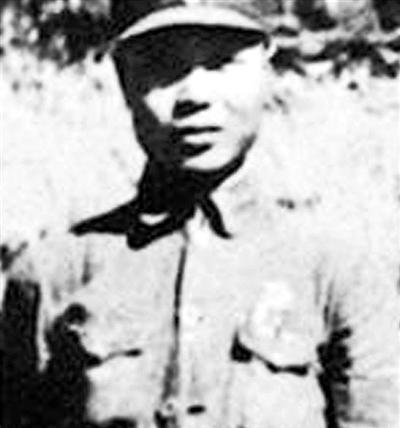
Portrait of Huang Cheng (file photo)
In Tuanhetou Township, Anci District, Langfang City, Hebei Province, the name of a heroic martyr is still praised by people. He was Huang Cheng, who was born in The village of Tun hetou.
Huang Cheng was born in 1914 in Anci County, Hebei (now Anci District, Langfang). In the autumn of 1930, he entered The Fourth Middle School of Beiping. After graduating in 1932, he was admitted to the preparatory department of Tianjin Beiyang Institute of Technology, and in the summer of 1934, he was admitted to the Department of Geosciences of Tsinghua University. During this period, he participated in patriotic and progressive groups led by the underground party of the Communist Party of China, such as the "National Armed Self-Defense Association" and the "Tsinghua Branch of the Esperanto Society."
In 1935, Japanese imperialism created the North China Incident and further encroached on our territory, and the Chinese nation reached the most dangerous moment. Under the leadership of the underground party of the Communist Party of China, various schools in Peiping successively established the Anti-Japanese Salvation Congress, and Huang Cheng was elected as the chairman of the Tsinghua University Salvation Congress. The National Salvation Congress issued a "Letter to the People of the Whole Country" and shouted out the common voice of the students in North China: "North China is so big that it is impossible to put a calm desk!" On December 9, the "12.9" movement broke out. As the leader of the tsinghua university student petition march, Huang Cheng led the students to break through the obstruction of the reactionary military and police and call for resistance to Japan and save the country with his flesh and blood. During the baptism of the Anti-Japanese Salvation Movement, Huang Cheng joined the Communist Youth League of China in January 1936 and became a member of the Communist Party of China in April.
In September 1936, Huang Chengyin served as the secretary of the Party Group of the Peking Federation of Students of the Communist Party of China, and assumed the leadership of the Party over the Peking Federation of Students.
After the Lugou Bridge Incident, Huang Cheng, in accordance with the requirements of the party organization, threw in his pen and went to Liu Xiang's troops in the name of the representatives of the National Salvation Congress to do united front work to resist Japan and save the dead, and established a secret special branch of the CPC in the Sichuan Army, with Huang Cheng as secretary.
In the spring of 1938, Huang Cheng joined the New Fourth Army, working in a detachment commanded by Chen Yi, and was soon transferred to the military department as the head of the military political department, assisting Yuan Guoping in carrying out the ideological and political work of the army. In early 1941, the Anhui Incident broke out, and Huang Cheng was unfortunately arrested and imprisoned in the Shangrao concentration camp. The Kuomintang stubborn army openly slandered the "rebellion" of the New Fourth Army and asked him to "reflect" and "renew himself." Huang Chengyi sternly rebuked the recalcitrant army: "Our New Fourth Army is an anti-Japanese contingent, and in the past few years it has turned to the north and south of the great river, and its achievements are brilliant, which is obvious to all; we do not surrender to Japan, we do not plunder the people, and we are bent on fighting the war to save the country, and we do not hesitate to shed blood and sacrifice. Is there anything to regret? In the face of threats, he regarded death as a homecoming, "Revolution is our right, sacrifice is our duty" "Engaging in the War of Resistance, no shame, I will never change my original intention because of the axe in front!" ”
On April 23, 1942, Huang Cheng calmly became righteous at the age of 28.
In 2016, Anci District built the Huang Cheng Deeds Exhibition Hall in The Village of Hetou, huang cheng's birthplace. In the same year, a red memory museum was built in the kite town of Tiishli in Tiaohetou Township, and the heroic deeds of Huang Cheng and other red historical figures in Tiaohetou Township were displayed in the museum for tourists and local people to commemorate and learn. Every Qingming, July 1st and other festivals and anniversaries, local primary and secondary school students, rural cadres, party members, etc. visit the Huang Cheng Deeds Exhibition Hall and the Red Memory Museum to receive red education.
"My uncle was only 28 years old when he died, and I was only 5 years old at the time, but I have worshipped my uncle who fought bravely against Japan since I was a child." Huang Cheng's nephew, Huang Zunxian, said he often went to the Huang Cheng Deeds Exhibition Hall and the Red Memory Museum to tell the audience about Huang Cheng's deeds. "This is the hometown of heroes, we are the descendants of heroes, and we have the obligation to inherit and carry forward the spirit of heroes who are not afraid of hardships and dangers and devote themselves to the revolution, and turn them into the driving force for us to build a beautiful homeland." (Source: Xinhua News Agency)